Buildings are responsible for more than 40% of global greenhouse gas emissions. There has been a great deal of progress made over the last thirty years to reverse the construction sector’s negative impact on the environment, and create buildings that are sustainable, cost effective, and beneficial to the surrounding ecosystem. It is actually possible to construct buildings that sequester carbon (and carbon equivalents) – buildings that help reverse environmental damage already done.
In 1990, the United Kingdom’s Building Research Establishment Group introduced BREEAM, the first green building rating system, to the world. Since then, the number of green building rating systems and certifications has grown exponentially. There has also been a proliferation of green product rating standards and labels, with approximately 100 currently in use in the United States. With so many players on the field, it can be a challenge to tell them apart. We broke down the key differences between the most popular certifications, standards, and approaches to sustainable building, to help define and understand the differences.
 LEED (Leadership in Energy and Environmental Design)
LEED (Leadership in Energy and Environmental Design)
LEED was designed by the US Green Building Council to promote human wellbeing, environmental efficiency, and waste reduction. LEED certifications and ratings are applied to buildings of all types and have become an international standard for architects, builders, and designers. Most LEED ratings systems are centered around the design and construction phases, and favor documentation over on-site testing. LEED offers 4 certification levels, which are based on a 100-point scale: Certified (40-49 points), Silver (50-59 points), Gold (60-79 points) and Platinum (80+ points). Points are awarded in seven categories:
- Site Selection
- Water Efficiency
- Energy and Atmosphere
- Materials and Resources
- Indoor Environmental Quality
- Regional Priority
- Innovation in Design
Certification is based on documentation; on-site inspections are not required.
 HERS Index
HERS Index
The Residential Energy Services Network (RESNET)’s House Energy Rating Index (HERS) measures a house’s energy performance. Measurable factors include heating, cooling, water heating, lighting, appliances, and the ability to generate power on-site. The Index uses the HERS Reference House — derived from 2004/2006 IECC (International Energy Conservation Code) specifications — to assign a score from 0 to 150 points. The Reference House is scored at 100, and net zero energy homes have a score of zero. Each percentage of energy reduction, when compared to the HERS Reference House, leads to a one point decrease in a house’s HERS Index rating. The score is determined by third-party certifiers, and has become an industry standard; more than two million homes have been certified since its inception in 1995.
 BREEAM (Building Research Establishment Environmental Assessment Method)
BREEAM (Building Research Establishment Environmental Assessment Method)
BREEAM is used by the BRE Group — an international, independent research collective — to measure the performance of buildings, houses, and communities around the world. BREEAM certifications are awarded by third-party assessors, who give star ratings based on several categories, including innovation, sustainability, health and safety, and climate resilience. Established in the United Kingdom in 1990, it is the world’s first rating system for green buildings. Over 2.2 million buildings have been registered and 565,000 certificates issued in 83 countries. It was first adopted in the United States in 2016. The BREEAM In-Use Standard is advantageous for existing buildings in the U.S. because of its relatively lax prerequisites and cost-effective nature.
Passive House
Passive House incorporates strategies based on building science to minimize the use of energy while maximizing comfort and quality of life. Passive House standards are some of the most demanding in the construction industry. Certification requires demonstrated design and documented adherence to measurable standards followed by testing to verify that performance is met. A building that meets Passive House standards can be both cost-effective and eco-friendly, thanks to its innovative approach to ventilation, heating and cooling. Passive House buildings can use as little as 1/10th the energy of standard code-compliant construction.
 1. PHI – Passive House Institute – Germany
1. PHI – Passive House Institute – Germany
Based in Darmstadt, Germany, The Passive House Institute (PHI) is the world’s leading source of Passive House research, certification and training. It was founded in 1996 by Dr. Wolfgang Feist, who, together with Professor Bo Adamson, originated and developed the Passive House standards. ‘Passive House’ is not limited to houses. Currently certified buildings internationally include urban towers, dormitories, churches, laboratories, public housing, libraries, schools and numerous other categories. All building types are capable of including Passive House energy strategies.
PHI offers independent testing and certification for buildings and building components, and consults on the development of new products. It hosts the International Passive House Conference, an annual gathering of thought leaders and innovators. It also holds sessions for the Research Group for Cost-effective Passive Houses, to address questions and challenges in the field and to identify new projects.
 2. PHIUS – Passive House Institute, United States
2. PHIUS – Passive House Institute, United States
PHIUS is a non-profit organization that split from PHI in 2007 and promotes standards, practices, and certifications that are specific to North America. These standards and practices take into account the varied climate zones across the U.S. and use similar but different calculations and systems of measurement than PHI.
PHIUS has established a network of member-based chapters through Passive House Alliance US (PHAUS), and hosts workshops and conferences for design professionals. They train builders to become Certified Passive House Consultants or PHIUS Certified Builders, and offer training in PHIUS + Rater verification and the WUFI Passive modeling tool.
In North America, one can receive Passive House Certification from either PHIUS or PHI. Buildings which are PHIUS-certified receive a positive HERS rating, meet RESNET (Residential Energy Services Network) Third-Party Quality Assurance requirements, and are awarded Zero Energy Ready Home status from the U.S. Department of Energy.
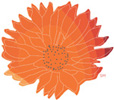 Living Building Challenge
Living Building Challenge
The International Living Future Institute intends to repair the environment and combat global overpopulation by seeding the planet with Living Buildings: buildings that regenerate resources like air, food and water, produce more energy than they consume, and benefit their surrounding ecosystem. To reach their goal, the ILFI has implemented the Living Building Challenge green building certification program. The challenge incorporates seven performance areas, or “Petals”:
- Site
- Water
- Energy
- Health
- Materials
- Equity
- Beauty
Since all of its tenets are mandatory (with temporary exceptions), it is a rigorous performance standard. Buildings must perform for 12 months following their completion in order to receive certification.
The International Living Future Institute (ILFI) maintains a ‘Red List’ of the worst in class materials prevalent in the building industry. In addition: The ILFI’s ‘Declare Database’ hosts detailed information on materials and products that have been registered with the Declare program. This program is essentially a nutrition label for products. It is used to find healthy products for construction projects.
 Net Zero
Net Zero
A Net Zero (or Zero Energy) building consumes less (or equal) delivered energy than it supplies over a typical year. Since even the most efficient building require some energy to operate (heating, cooling, hot water, cooking, laundry, lighting, plug loads, etc.), some form of renewable on-site energy is required. This can be wind, solar, tidal or any form of on-site generation. Photovoltaic solar is the most common.
The U.S. Department of Energy and National Institute of Building Sciences encourage the construction of Net Zero buildings. Net Zero Energy Certifications are awarded by The International Living Future Institute (ILFI) and must comply with various aspects of the Living Building Challenge.
 Green Globes
Green Globes
A North American certification program and rating system for construction projects that includes new construction, existing buildings and interiors. Created by The Green Building Initiative and adopted internationally, the voluntary certification process includes an on-site third party assessment and customized guidance. Participants choose which sustainability features best fit their needs, and only need to meet 350 of a possible 1,000 points to earn a rating. Certification is also offered in the United Kingdom. There are four levels of Green Globe ratings in the United States. As of 2018, Green Globes has certified more than 1,300 buildings.
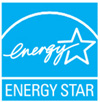 Energy Star
Energy Star
ENERGY STAR® is an energy efficiency certification created in 1995 by the Department of Environmental Protection (DEP) and U.S. Department of Energy (DOE). Its familiar logo and light blue sticker can be found on over 300,000 products, including light bulbs, windows, computers, electronics, appliances, and heating and cooling systems. Houses, apartments, commercial buildings, and industrial plants that follow strict efficiency guidelines can also earn the Energy Star symbol. Today there are nearly two million single-family houses and more than 35,000 commercial buildings and industrial plants that meet this classification. The EPA’s free online Portfolio Manager tool measures energy use, water consumption and greenhouse gas emissions on a scale from 1 to 100; a score of 75 or higher means you can apply for certification. Forty percent of commercial buildings in the United States have already been benchmarked. Standards are typically updated on a biannual basis.
 SITES (Sustainable Sites Initiative)
SITES (Sustainable Sites Initiative)
SITES is an initiative and ratings system administered by The Green Business Certification Inc. (GBCI). It is used to design and maintain sustainable landscapes that conserve natural resources, decrease energy use, support wildlife, promote human health and welfare, and negate the impact of natural disasters. Projects need 70-84 points to become SITES Certified, 85-99 points to earn a SITE Silver rating, 100-134 points to earn a SITES Gold rating, and 135 or more points to be certified CITES platinum. LEED offers sustainable SITES credits for projects that feature eco-friendly landscapes. Sites need to be at least 2,000 square feet to qualify for SITES certification.
Well Building Standard (IWBI)![]()
Well Building Standard was created by The IWBI (International WELL Building Institute) to assess a building’s impact on human health and wellness. It is currently optimized for commercial and institutional office buildings, and factors in air, water, nourishment, light, and the fitness, comfort, and the mental and emotional health of its occupants. It has been adopted throughout the United States and abroad, and can be applied in tandem with LEED and BREEAM certifications.
Performance Excellence in Electricity Renewal (PEER)
PEER is the U.S. Green Building Council Inc.’s (USGBC) tool for measuring a power source’s efficiency, environmental impact, and ability to withstand natural disasters. It’s modeled after the USGBC’s LEED certification program, and applies to cities, utilities, campuses and transit. PEER certifications need to be renewed every five years.

Collaborative for High Performance School (CHPS)
A collection of school boards, nonprofits, government agencies, businesses and individuals working together to create healthy, environmentally-friendly K-12 schools that conserve natural resources and are high energy performing. There are currently over 700 CHPS schools throughout the United States.
 Architecture 2030
Architecture 2030
A non-profit organization whose goal is to achieve zero carbon emissions in new and existing buildings, and eliminate the embodied carbon emissions that result from construction and building products, by 2030. In 2006, it launched the 2030 Challenge, a key inspiration for the global zero emissions movement. In 2015, it helped establish the China Accord, aimed at helping China’s private building sector adopt low carbon/carbon neutral standards.
INTERNATIONAL BUILDING RATING SYSTEM STANDARDS
Several ratings systems are in use outside of the United States and Europe. Some have been adopted internationally. These include:
NZEB – Nearly Zero Energy Building Standard
A European standard that requires all buildings to achieve a high level of energy performance (requiring very little energy to operate). Primary energy consumption must be less than 45kwh/m2/year. Energy is obtained mainly from renewable sources that are produced either on-site or in close proximity. The intended result of implementing this standard is to significantly reduce harmful greenhouse gas emissions. European Union’s goal is to have all new buildings meet the NZEB Standard by the end of 2020. Ireland implemented this standard for all new houses in November of 2019.
![]() Green Star
Green Star
Australia’s sustainability certification program for existing and new houses, buildings and communities, established in 2002. One to six stars are awarded in fourteen categories, addressing environmental impact, sustainability, innovation, livability, governance and economic prosperity. Its practices have been adapted in New Zealand and South Africa.
![]() Beam Plus – Hong Kong
Beam Plus – Hong Kong
Hong Kong’s assessment tool for green buildings and neighborhoods. Beam stands for Building Environmental Assessment Method. It is designed to address the region’s densely populated, high-rise-heavy built environment.
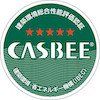 CASBEE – Japan
CASBEE – Japan
CASBEE (Comprehensive Assessment System for Built Environment Efficiency) is Japan’s Government-backed green rating tool. It assesses a building’s indoor environment and scenic surroundings as well as its use of sustainable energy.
 EDGE
EDGE
The International Finance Corporation’s EDGE (Excellence In Design For Greater Efficiencies) initiative provides certification, training, and software for developing countries looking to meet green building standards. To be certified, a building must save 20 percent of its energy, water, and embodied energy in materials, when compared to conventional construction projects. Edge Advanced projects have 40 percent energy savings. EDGE is intended for newly constructed buildings across diverse climates. At its core is the principle that going green is financially rewarding for all involved. EDGE projects have been established in China, India, Indonesia, Viet Nam, Ghana, Mexico and Costa Rica.

Green Star SA – South Africa
The Green Building Council of South Africa’s popular rating tool was created to provide a common language and measurement standard for the green building industry and recognize and celebrate environmental leadership. It was modeled after Australia’s Green Star rating system.
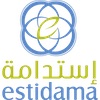 Pearl Rating System for Estidama – UAE
Pearl Rating System for Estidama – UAE
Abu Dhabi’s sustainable development initiative “Estidama” was created to transform the city into a green oasis by 2030. The Estidama Pearl rating system evaluates green building practices in buildings, villas, and communities, using a scale from 1 to 5. A rating of at least 1 pearl is mandatory for all new construction projects. There are three rating stages:
- Design
- Construction
- Operational
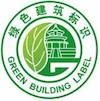 Green Building Evaluation Label (China Three Star)
Green Building Evaluation Label (China Three Star)
China’s green building certification program was established in 2006 by the Chinese government, and is applied to new, large public buildings. Qualifications are divided into six categories: land, energy, water, resource/material efficiency, indoor environmental quality and operational management.
RELATED ENVIRONMENTAL AND ENERGY RATING SYSTEMS
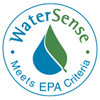 WaterSense
WaterSense
The Environmental Protection Agency (EPA) created the WaterSense initiative in 2006 to promote best practices in water conservation. Their WaterSense label is used for products that perform as well as their competitors yet are at least 20 percent more efficient. Products range from shower heads and toilets to irrigation controllers. Homes that meet requirements for plumbing, hot water delivery, and landscape design can also earn the label.

Forest Stewardship Council (FSC)
An international non-profit organization based in Germany which offers membership and certification for forest managers and companies whose products are derived from trees. The FSC’s focus includes protecting forests, promoting the welfare of indigenous people and forest workers, and working with industries to promote eco-friendly products. THE FSC follows the life of a tree from its inception to its final sale. The FSC label can be found on products ranging from paper goods to food, furniture and construction materials.
![]() SCS Global Services
SCS Global Services
SCS Global Services (Scientific Certification Systems, Inc.) provides “third-party environmental, sustainability and food quality certification, auditing, testing and standards development.” Within the built environment, they offer certification for structural materials, interior finishes and furnishings, covering everything from lead safe paint and sustainable carpets to indoor air quality and formaldehyde emissions. They also promote sustainability over a wide range of industries, including agriculture, seafood, mining and forestry.
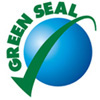 Green Seal
Green Seal
The United States’ primary ecolabel was launched in 1989, making it a pioneer in the industry. It has been used to certify products and services in more than 450 categories. It is used by government agencies, schools, businesses and institutions. The Green Seal website provides a database of eco-friendly hotels, cleaning services, and restaurants. It was developed by the International Organization for Standardization (ISO), and is a component of multiple LEED rating systems.
 Cradle To Cradle
Cradle To Cradle
A certification program for buildings and goods — including building materials, interior design products, textiles and fabrics — that have positive effects on the ecology, society, and the economy.
Cradle to Cradle Buildings are built exclusively with Cradle to Cradle-certified materials, and can be broken down, recycled, and used to create new buildings. They produce renewable energy, actively support biodiversity, conserve water, and capture and store C02 through topsoil production and carbon reuse. The use of Cradle to Cradle products can add points to one’s score under LEED v4.
![]() GreenGuard
GreenGuard
GreenGuard is a certification program for low-emitting products that improve indoor air conditions, resulting in healthier home, office, educational, and healthcare environments. Builders and designers can earn points in including LEED v4 and several other green building ratings systems by employing GreenGuard-certified products.
 Green Squared
Green Squared
An eco-friendly certification system for tiles and tile installation products. Green Squared assesses “product characteristics, manufacturing, end of product life management, progressive corporate governance, and innovation.” Using Green Squared-certified tiles can earn a Leed v4 point in Certified Multi-attribute Products and Materials.
GREEN PRODUCT STANDARDS & CERTIFICATIONS
 ISO Certification
ISO Certification
The International Organization for Standardization (ISO) was formed in Geneva, Switzerland in 1947 and today incorporates 164 national standards bodies. The organization has developed tens of thousands of International Standards for a variety of business sectors, including more than 100 standards for buildings. ISO standards include technical product specifications, procedures and guidelines for services, personnel, and management system standards for quality (ISO 9000) and the environment (ISO 14000). ISO certifications are awarded by third-party assessors.
The ISO’s Type I and Type II green product labels fall under the ISO 14020 series, and are widely used in the United States. Type I labels (like Green Guard and Green Squared) are awarded by a third party and have to meet more than one criteria, while Type II labels are single-attribute and self-declared by the manufacturer.
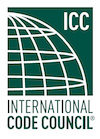
IECC (International Energy Conservation Code)
a. Prescriptive Paths
b. Performance Paths
The ICC (International Code Council) was created in 1994 for the purpose of unifying the various building codes being employed throughout the United States. Its fifteen climate zone-specific model I-Codes regulate commercial, institutional and residential buildings. ICC codes are typically updated every three years.
Most states and U.S. territories enforce the International Energy Conservation Code (IECC) — combined with provisions from the ICC’s International Building Code (IBC) and International Residential Code (IRC). The IBC addresses issues related to health and safety, and the IRC offers mandates for residential buildings that are three stories or less.
The ICC’s IECC (International Energy Conservation Code) is a comprehensive model energy code that details performance standards for residential and commercial buildings. It is designed to be adopted in compliance with the laws and procedures of local governments, and can be amended accordingly. It requires the use of energy-efficient mechanical systems, lighting systems, power systems, and building envelopes.
The IECC is considered a ‘Green Building Code’ in the United States; unlike green building ratings systems, compliance with the current IECC (modified by each State) is mandatory in 48 of the 50 States. (California and Indiana are the only two states that don’t employ the IECC.) There are two commonly used paths to satisfy code requirements: Prescriptive and Performance. A Prescriptive path’s requirements are well-defined and quantified in a code’s tables. Performance-based Paths achieve the same desired result, while disregarding the requirements for individual building components.
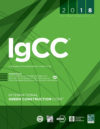 International Green Construction Code (IgCC)
International Green Construction Code (IgCC)
The International Green Construction Code (IgCC) outlines the minimum requirements for increasing the environmental and health performance of newly constructed buildings and building renovations. It was created by the International Code Council (ICC), in partnership with American Society of Testing and Materials – ASTM International (ASTM) and the American Institute of Architects (AIA). It was designed to be used in conjunction with non-green international building codes, and applies to commercial, industrial, mixed-use, and residential buildings that are at least four stories tall. The code was designed to mesh seamlessly with LEED, and is co-sponsored by The Green Building Initiative and the United States Green Building Council.
![]() California Green Building Standards Code (CALGREEN)
California Green Building Standards Code (CALGREEN)
In 2011, California became the first state to enforce a state-mandated green building code, commonly referred to as CALGREEN. It offers guidelines for planning and design, energy efficiency, water efficiency and conservation, material conservation and resource efficiency, and environmental quality. Unlike most green building codes, it contains both voluntary and mandatory measures.
IEQ (Interior Environmental Quality)
Sometimes referred to as IAQ (Indoor Air Quality), IEQ refers to the quality of a building’s interior environment. In addition to ventilation, exhaust, and the presence of airborne contaminants, it measures a building’s acoustics, natural and artificial lighting, ergonomics, and thermal conditions. Studies show that productivity in the workplace is affected by IEQ.
![]() EPD (Environmental Product Declaration)
EPD (Environmental Product Declaration)
EPDs are third-party verified reports, made in accordance with transparent standards, which detail the life cycle of a product’s impact on the environment. Up to two LEED v4 points can be earned through the use of EPDS under the “Building product disclosure and optimization —environmental product declarations” Material and Resources credit. EPDs incorporate Product Category Rules (PCRs) and Product Life Cycle Assessment (LCAs). The Building Research Establishment (BRE) offers the online assessment tool BRE LINA to aid in the creation of EPDs for the construction sector.
 HPDC (Health Product Declarations Collaborative)
HPDC (Health Product Declarations Collaborative)
Health Product Declarations are documents that disclose the chemical contents of building materials. They were created to encourage the use of materials that are sustainable and promote human wellness. Projects that declare HPDS for at least 20 products can earn one point towards LEED v4’s Building Product Disclosure for Material Ingredients and Optimization (Material Ingredients). The Health Product Declaration Collaborative’s HPD Open Standard is a specification for reporting building product content and health information.
 Declare – chemical analysis
Declare – chemical analysis
Declare is an ecolabel and online database created by the International Living Future Institute (ILFI). It details the ingredients of building sector products. It consists of three categories – “Red List Free”, “LBC Compliant,” and “Declared.” “Red List Free” product ingredients are completely disclosed to 100 ppm (parts per million), and contain no Red List chemicals. “LBC Compliant” products meet Living Building Challenge criteria but require LBC Exceptions to qualify. “Declared” products ingredients use at least one Red List chemical that is not listed under LBC’s Exceptions, or do not meet criteria for emissions. Using Declare-labeled products can help builders obtain a LEED v4 Building Product Disclosure and Optimization Credit, if they have been awarded “Red List Free” or “Declared” status, or their chemical inventory is at least 1000 ppm. The International WELL Building Standard’s Feature 26 for Enhanced Material Safety approves of using “Red List Free” or “LBC Compliant” products as a compliance pathway.
 JUST – International Living Future Institute
JUST – International Living Future Institute
JUST is a management program created by the International Living Future Institute for organizations that are committed to social justice and employee equity. The JUST 2.0 label awards one to three stars in the following Indicators: Diversity, Equity, Safety, Worker Benefit, Local Benefit, Stewardship, Employee Health, and Purchasing and Supply Chain. JUST provides a compliance pathway and credit for LEED v.4, WELL, and the ILFI’s Living Building Challenge.0
 Stamford, CT: “Stamford 2030 District”
Stamford, CT: “Stamford 2030 District”
The Stamford 2030 District is a collaborative community of high performance buildings in Stamford, Connecticut. The district formed in 2014, and is committed to reducing the city’s energy and water consumption and transportation emissions by 50 percent by the year 2030.
The 2030 Districts Network is a public-private nonprofit organization whose goal is to reduce cities’ resource use by adopting the Architecture 2030 Challenge for Planning. The Network offers a three-phrase framework for other cities to become Established 2030 Districts. Currently, there are Established Districts in 23 North American cities, including New York City, San Francisco and Seattle.
Written by Leonard Wyeth and Evan Schlansky. If you want to use any of this information: Please see the Terms of Usage – Usage Policy